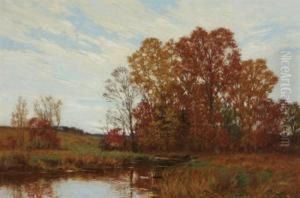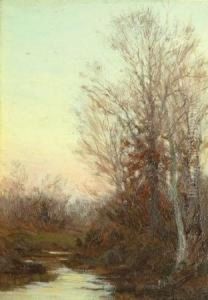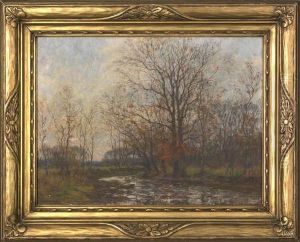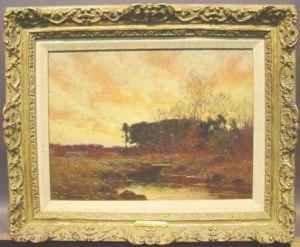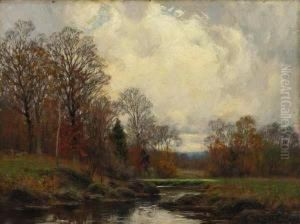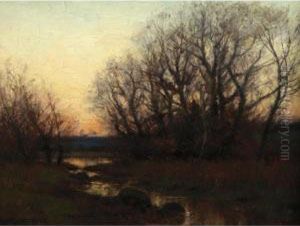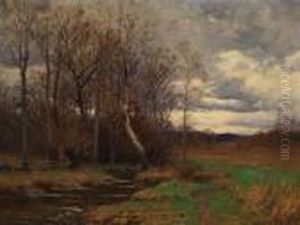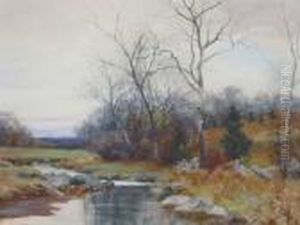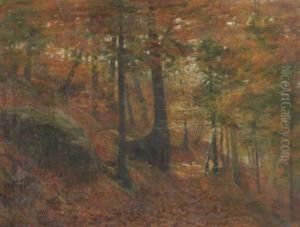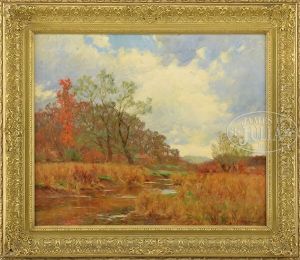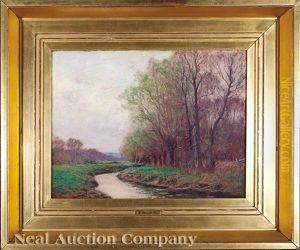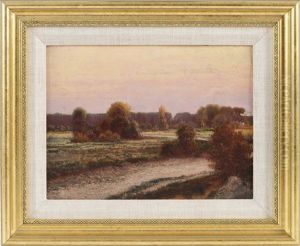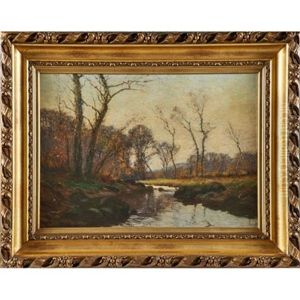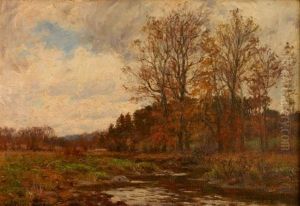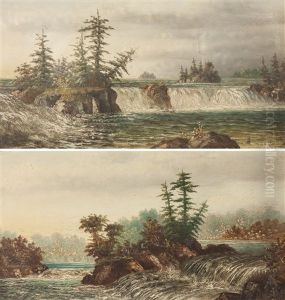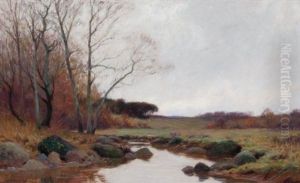William Merritt Post Paintings
William Merritt Post was an American painter known for his tonalist landscapes that often depicted the serene countryside of the northeastern United States. Born on July 2, 1856, in Brooklyn, New York, Post developed an interest in art at an early age. He studied under the artist James Carroll Beckwith, a student of the famed French artist Jean-Léon Gérôme. Post's early work was influenced by the Hudson River School, but he eventually became associated with the Tonalism movement, which emphasized mood and atmosphere in painting.
Post's landscapes often featured scenes from Connecticut, where he lived in the rural community of Falls Village. His paintings are characterized by a refined use of color and light, conveying a sense of peacefulness and timelessness. He frequently depicted the same scene at different times of day, showcasing his sensitivity to the subtle changes in light and color that occur with the shifting hours.
Throughout his career, Post exhibited his work at various institutions, including the National Academy of Design and the Pennsylvania Academy of the Fine Arts. He was also a member of the Salmagundi Club, an important New York City organization for artists. Although not as widely known as some of his contemporaries, Post's work was well-regarded by his peers, and he enjoyed a reasonable degree of commercial success during his lifetime.
William Merritt Post's dedication to capturing the quiet beauty of the American landscape has earned him a lasting place in the history of American art. His paintings continue to be appreciated for their tranquil and contemplative qualities, and his work can be found in several museums and private collections. Post passed away on November 10, 1935, in New York City, leaving behind a legacy of artistic achievement that continues to inspire lovers of Tonalism and landscape painting.

